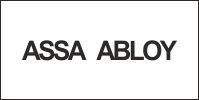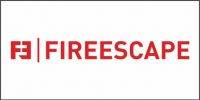 With the exponential evolution of Artificial Intelligence (AI) in recent years, it’s time to think about how it can positively impact human lives. Major disasters are often accompanied by large scale chaos. In such times, the ability to act quickly and access accurate information is a critical imperative for humanitarian organizations. An AI-based solution capable of assisting seamlessly in such situations can transform the way the international community responds to large-scale disasters. This is especially important today, given that the United Nations (UN) recently issued an alert that states the world has at most 12 years to avert a climate catastrophe.i
With the exponential evolution of Artificial Intelligence (AI) in recent years, it’s time to think about how it can positively impact human lives. Major disasters are often accompanied by large scale chaos. In such times, the ability to act quickly and access accurate information is a critical imperative for humanitarian organizations. An AI-based solution capable of assisting seamlessly in such situations can transform the way the international community responds to large-scale disasters. This is especially important today, given that the United Nations (UN) recently issued an alert that states the world has at most 12 years to avert a climate catastrophe.i
This paper explores the concept of using an AI-based chatbot to assist rescue teams by instantly providing accurate information, answering queries, and more.
How AI can help drive faster humanitarian response
As access to big data becomes easier, technologies, such as data analytics, AI and ML (Machine Learning) are enabling the creation of intelligent systems that can process large volumes of data in real time to provide valuable insights, predict events, and even initiate mitigation responses. Here are three ways in which AI-driven chatbots can aid disaster management for effective rescue operations:
Providing real-time inventory updates: One of the most valuable features of an AI-driven disaster recovery chatbot is enabling rescue teams to take stock of inventory in real time, leading to optimal utilization of available inventory. For instance, if a rescue worker were to say to the chatbot, “Food for kids”, the chatbot displays all the relevant products, such as milk packets along with their available quantities. Similarly, when asked about rice stock, bots are able to instantly display the exact stock of rice with the available quantity to help rescue teams plan and distribute resources better. Ideally, such a solution should store and update inventory details locally and also sync with a database hosted on the cloud to maintain redundancy in a centralized database, enabling exchange of information across geographies.
Overcoming language barriers: AI bots can use language translation services, such as speech to text, text to speech and tone analyzer to analyze the inputs that rescue teams enter using their mobile devices. The result: international rescue teams are able to communicate in the regional language as required, thereby making rescue efforts more targeted and helpful. AI chatbots can also answer large volumes of distress and help calls, analyze callers’ tone of voice to identify urgency, and accordingly prioritize rescue efforts. For instance, The World Food Programme (WFP), a leading humanitarian organization that fights hunger globally, leverages an AI-based survey chatbot to communicate with people affected by crises, in 20 different languages.
Identifying areas of high impact: During disasters, power and network availability is a major challenge that hinders the ability of organizations to leverage the full potential of their technical solutions. In such situations, an AI chatbot can add significant value by displaying a geo-specific severity level indicator map (heat map) of the disaster-hit area. For instance, if power, telephone and internet are all disconnected, the geographical area is designated as high impact. Figure 1 illustrates a dummy map of USA with high impact areas color coded for quick identification. Multiple levels of crises have also been represented with numbers to help identify severely affected areas easily.




















































